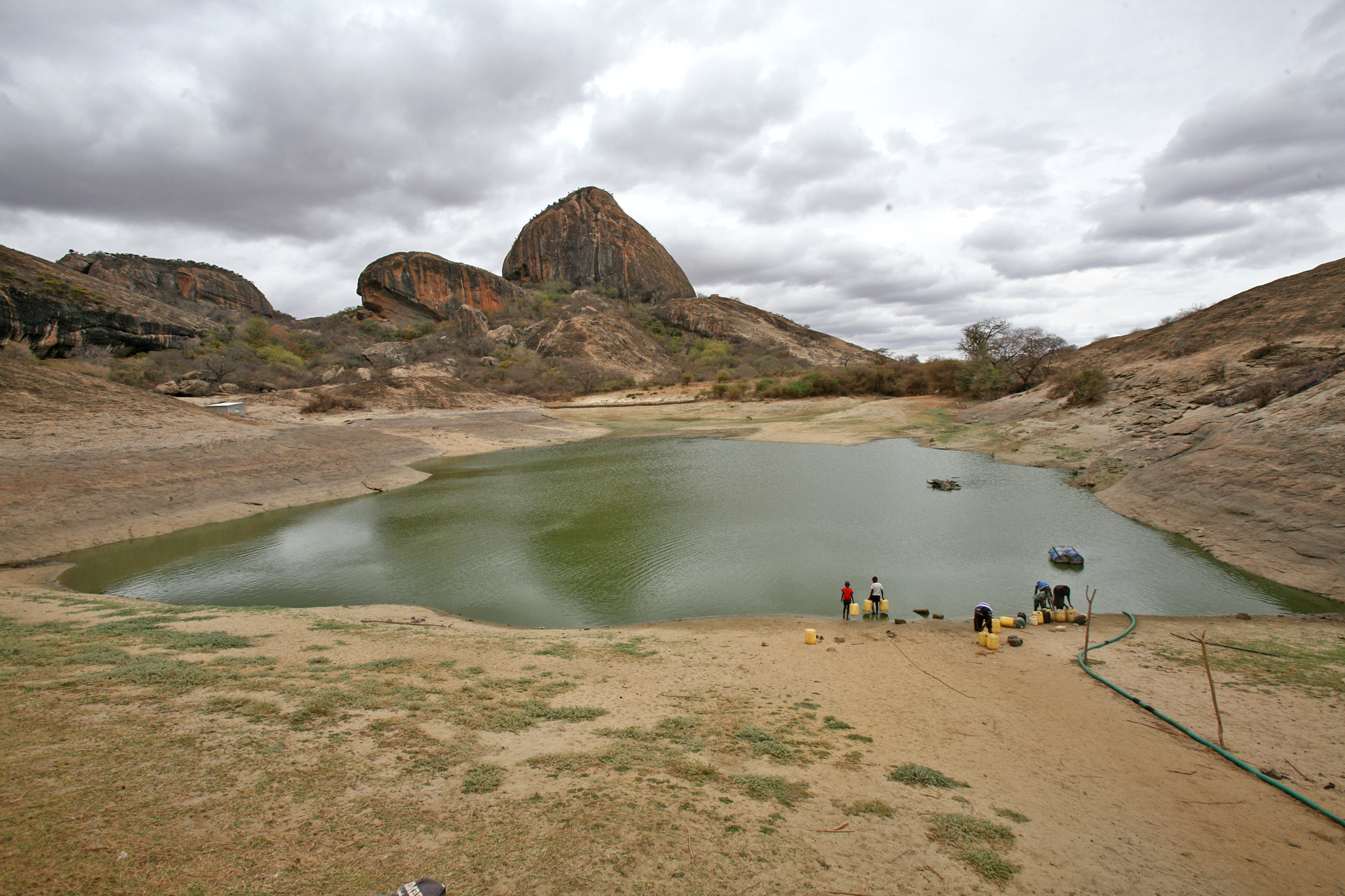"In some places, you have six people lining down [forming a human ladder] into a well to draw water," Henry Obino, the Tana River District Commissioner, told IRIN.
"The wells are 30-35ft [9-10.5m] deep now."
Falling water table levels due to failed past rains have meant that water sources have not been replenished, forcing residents, who live far from the Tana River, Kenya's longest, to dig wells deeper, despite the risk of collapse.
On 7 August, a well collapsed in the local Konekaliti area, killing one person, said Obino.
In the neighbouring semi-arid region of Mwingi, drought conditions are exacerbating water scarcity and raising the fear of disease outbreaks.
In the Ngomeni area, about 50km from Mwingi Town, there is a rain-fed reservoir, formed by a man-made dam, which usually serves hundreds of households up to 15km away. Now it is drying up for the first time in years, reduced to a shallow pool of murky green water.
Relatively little water now reaches the taps and troughs - fed by pumps and an overflow system – that are normally used for jerry cans and livestock to avoid direct contact with the reservoir.
"We are now letting people get the water directly from the reservoir," explained Mutua Komu, who collects user fees on behalf of a local water management committee.
"While we don't let the animals go down into the reservoir, imagine 100 people getting in to fetch the water, which has already become very dirty due to a lack of rain. The contamination is unimaginable," said Komu.
"We rely on this water for everything in Ngomeni: for the schools, the hospital, and the town. The private boreholes charge a lot of money," he said.
Kikwele Mutua, who is in his late 50s, told IRIN he fetched between 50 and 60 20-litre jerry cans, making about 12 trips to the dam daily, to supply the local Ngomeni Secondary School.
|
Photo: Ann Weru/IRIN |
| As levels fall in the Ngomeni dam, the risk of disease grows as the pumped water supply dries up |
Along the Mwingi-Garissa road, scenes of families scooping out sand from dry river beds in search of water are common - as are long queues at government water kiosks in Mwingi Town.
About 8,000 people use the water kiosks daily, according to the Kiambere-Mwingi Water and Sanitation Company, paying a subsidized KSh2 (US$0.02) per 20-litre jerry can. Water vendors charge a costly KSh10 ($0.10) a jerry can.
The water scarcity and consequent access risks are replicated elsewhere.
In Bamba Division, in the coastal area of Kilifi, for example, residents are trekking farther to access increasingly dangerous water points.
Salama wa Kazungu told IRIN she walks on average two hours each way for a 20-litre jerry can of water with her youngest child, an eight-month-old baby, strapped to her back.
"Sometimes we do not have rain here in a year," she said.
Humans vs animals
Drying-up water sources in parts of the Tsavo National Park have meant that wild animals are competing with humans for the available resources in parts of Bamba.
"You know how elephants are, they drink and bathe in the water," Stephen Muanga, Bamba district officer, told IRIN. "Water is an issue given that if it does not rain, then there is no water here."
Even where water is not that far off, such as in the coastal Tana River Delta District, transporting the water to where it is needed is a problem.
According to Elias Gitonga Kithaura, the district commissioner, despite some 2km canals being constructed to help the Tana River retake its course, which changed at the Matomba brook in early August 2008, there are challenges.
"Last week there was no problem, but now people in Tarasaa Division are complaining that the water is stagnant," said Kithaura, adding that this had been caused by falling river levels.
Tarasaa has a large settled population as well as schools and a hospital.
The meandering of the river is also raising fears of it coming into town at the Garini area, along the road to Lamu.
"Blocking the river is expensive," Kithaura said. "Water is not a problem here; the problem is taking it where we want [it]."
aw/am/mw
This article was produced by IRIN News while it was part of the United Nations Office for the Coordination of Humanitarian Affairs. Please send queries on copyright or liability to the UN. For more information: https://shop.un.org/rights-permissions





